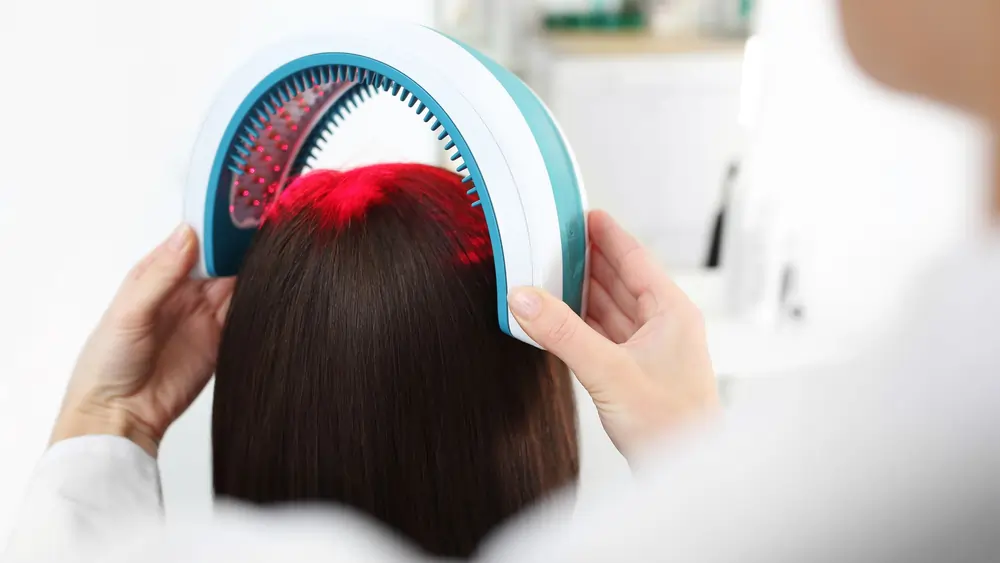Hair loss is a common concern affecting people worldwide, and the quest for effective solutions has led to the rise of advanced hair transplant methods. Among these, Follicular Unit Extraction (FUE) and Direct Hair Implantation (DHI) have emerged as leading contenders, each boasting unique advantages and techniques. This article aims to delve into the depths of the FUE vs DHI debate, dissecting the intricacies of these procedures to aid individuals in making informed decisions about their hair restoration journey.
Understanding FUE (Follicular Unit Extraction)
Follicular Unit Extraction (FUE) represents a revolutionary approach to hair transplantation. Unlike FUT, which involves the removal of a strip of scalp, the FUE hair transplant is characterized by the extraction of individual hair follicles directly from the donor area. This is accomplished using a specialized punch tool that makes tiny incisions around each follicular unit, allowing for their extraction without the need for stitches.
Advantages of FUE vs DHI
- Minimally Invasive Nature: FUE is renowned for its minimally invasive nature, reducing the risk of complications associated with traditional strip harvesting. This approach minimizes trauma to the scalp, resulting in less postoperative discomfort and a faster recovery period.
- Reduced Scarring: The absence of a linear scar, a common outcome of traditional methods, is a significant advantage of FUE. Instead, tiny, dot-like scars are scattered across the donor area, making them less conspicuous and ideal for those who prefer shorter hairstyles.
- Faster Recovery Time: FUE typically boasts a quicker recovery time compared to traditional methods. Patients can often resume normal activities within a short period, contributing to the growing popularity of this technique.
Limitations of FUE vs DHI
- Time-Consuming Procedure: The meticulous extraction of individual follicular units can make FUE a time-consuming process, especially for larger transplant sessions. This aspect may be a consideration for individuals with limited time availability.
- Higher Cost Per Graft: The precision and labor-intensive nature of FUE can contribute to a higher cost per graft compared to some alternative methods. Understanding the financial implications is crucial for individuals planning a hair transplant within a specific budget.
- Potential for Graft Transaction: The delicate nature of FUE requires a skilled surgeon to minimize the risk of graft transaction, where the follicular unit is damaged during the extraction process. The surgeon’s expertise is pivotal in achieving optimal graft survival rates.
Overview of DHI Procedure
Direct Hair Implantation (DHI) stands out as an innovative technique designed to enhance precision and efficiency in hair transplantation. DHI builds upon the principles of FUE but introduces a unique approach to graft placement. Unlike FUE, the DHI hair transplant incorporates a specialized Choi Implanter Pen, allowing for simultaneous extraction and implantation of hair follicles, eliminating the need for pre-made incisions.
Advantages of DHI vs FUE
- Enhanced Precision in Graft Placement: DHI’s distinct advantage lies in its ability to precisely control the depth, direction, and angle of each implanted hair follicle. This meticulous control contributes to achieving natural-looking results with improved density and aesthetics.
- Reduced Time for Graft Survival: The direct implantation of follicles minimizes the time they spend outside the body, leading to higher graft survival rates. This can be particularly beneficial for individuals undergoing extensive transplant sessions.
- Elimination of Channel Creation Step: DHI eliminates the need for creating recipient site incisions separately. The Choi Implanter Pen directly implants the follicles into the recipient area, streamlining the process and potentially reducing the overall procedure time.
Limitations of DHI vs FUE
- Increased Expertise Required: Performing DHI requires a higher level of expertise due to the precision demanded by the Choi Implanter Pen. Surgeons must undergo specialized training to master this technique, which may limit its availability in some regions.
- Possibility of Increased Cost: The specialized tools and training required for DHI may contribute to higher procedural costs. Individuals considering this technique should weigh the potential benefits against the associated financial considerations.
- Limited to Certain Hair Types and Conditions: DHI may be more suitable for specific hair types and conditions, and its effectiveness can vary. Understanding the compatibility of DHI with individual cases is crucial to achieving optimal results.
FUE vs DHI: Comparative Analysis
Now that we have dissected the fundamental aspects of FUE and DHI individually, it’s essential to embark on a comparative journey. Lets’s objectively analyze and contrast these two prominent hair transplant methods across various dimensions, providing readers with a nuanced understanding to aid in their decision-making process.
Graft Survival Rates
- FUE:
- The meticulous extraction process in FUE, when performed by a skilled surgeon, can yield high graft survival rates.
- Surgeon expertise plays a crucial role in minimizing graft transaction and ensuring the viability of each follicular unit.
- DHI:
- DHI’s direct implantation technique aims to reduce the time follicles spend outside the body, potentially enhancing graft survival rates.
- The precision afforded by the Choi Implanter Pen contributes to optimal placement, further supporting graft survival.
Duration of the Procedure
- FUE:
- The time-consuming nature of FUE is a consideration, especially for individuals seeking larger transplant sessions.
- The procedure duration can vary based on factors such as the number of grafts required and the surgeon’s experience.
- DHI:
- DHI’s simultaneous extraction and implantation process can streamline the procedure, potentially reducing overall duration.
- The efficiency of the Choi Implanter Pen contributes to a more controlled and precise transplantation process.
Cost-Effectiveness
- FUE:
- The precision and labor-intensive nature of FUE can contribute to a higher cost per graft.
- Individuals should weigh the potential benefits against the financial considerations associated with FUE.
- DHI:
- The specialized tools and training required for DHI may result in increased procedural costs.
- Assessing the cost-effectiveness of DHI involves considering the potential benefits, including reduced procedural time and enhanced precision.
Scarring and Recovery
- FUE:
- FUE’s minimal scarring is a notable advantage, with tiny dot-like scars scattered across the donor area.
- The faster recovery time associated with FUE appeals to individuals seeking a quicker return to normal activities.
- DHI:
- DHI’s direct implantation method may contribute to less noticeable scarring, similar to FUE.
- Recovery time can vary but is generally considered shorter than traditional strip harvesting methods.
Suitability for Different Hair Types and Conditions
- FUE:
- FUE is generally suitable for various hair types and conditions, making it a versatile option for a broad range of individuals.
- The surgeon’s expertise is crucial in tailoring the procedure to specific cases.
- DHI:
- DHI’s precision in graft placement may make it particularly suitable for individuals seeking meticulous control over the aesthetic outcome.
- Compatibility with different hair types and conditions should be discussed with the surgeon during the consultation.
Choosing Between FUE and DHI: Factors to Consider
Navigating the choice between FUE vs DHI requires careful consideration of various factors, each playing a pivotal role in achieving satisfactory outcomes. Tailoring the decision to individual needs and preferences involves a thorough examination of the following key factors:
- Hair Loss Pattern: The pattern and extent of hair loss differ among individuals. Consultation with a qualified surgeon will help assess whether FUE or DHI is better suited to address specific patterns, such as receding hairlines, crown thinning, or overall density concerns.
- Donor Area Characteristics: The characteristics of the donor area, including hair density and texture, influence the suitability of FUE or DHI. Understanding the limitations and advantages of each method in the context of the individual’s donor area is crucial.
- Hair Type: The type of hair, whether straight, wavy, or curly, can influence the choice between FUE and DHI. While both methods are versatile, consulting with a surgeon can provide insights into which technique aligns best with specific hair types.
- Pre-existing Hair Conditions: Individuals with pre-existing hair conditions, such as curly or coarser hair, may benefit from a technique that offers enhanced control over graft placement. DHI’s precision may be particularly advantageous in such cases.
- Aesthetic Goals: Clearly defining aesthetic goals is key to selecting the most suitable method. Whether the focus is on achieving a natural-looking result, increased density, or minimized scarring, communicating these goals with the surgeon is crucial.
FUE vs DHI: Future Trends in Hair Transplantation
As technology and research in the field of hair transplantation continue to advance, it is essential to explore the emerging trends that may shape the landscape of FUE and DHI in the future. Technological innovations and scientific breakthroughs may not only refine existing procedures like FUE and DHI but also introduce novel methods that could revolutionize the field. Individuals considering hair restoration in the coming years may benefit from a landscape enriched with advanced techniques and more personalized solutions.
Advancements in FUE Technology
Ongoing research and development focus on automated extraction devices, aiming to enhance the precision and efficiency of FUE procedures. These devices may reduce extraction time and potentially lower costs.
The integration of robotics in FUE procedures is a promising trend. Robot-assisted systems can provide surgeons with improved control and accuracy during the extraction process, leading to consistently high-quality outcomes.
Evolution of DHI Techniques
Innovations in implantation tools, including enhancements to the Choi Implanter Pen, are anticipated. These improvements may further refine the precision of graft placement in DHI procedures.
Continued research may broaden the applicability of DHI to a wider range of hair types and conditions. This expansion could make DHI an even more versatile option for individuals seeking personalized hair restoration.
FUE vs DHI: Conclusion
In the ongoing debate of FUE vs DHI, the choice between these two prominent hair transplant methods ultimately rests on a combination of individual factors, surgical expertise, and evolving technological trends. Each technique brings its unique strengths to the table, catering to the diverse needs and preferences of individuals seeking hair restoration.
The journey to a fuller head of hair is a personal one, and understanding the intricacies of FUE and DHI is a crucial step in making an informed decision. Whether one opts for the precision of DHI or the versatility of FUE, consulting with a qualified professional remains paramount.
The FUE vs DHI debate need not persist. Leading clinic IdealofMeD, stands out with its distinctive FUE & DHI Combination hair transplant. Tailored for individuals experiencing thinning hair on the sides and balding on the crown, this innovative procedure has been tried and tested extensively, consistently delivering optimal hair transplant results each year. The technique not only effectively addresses diverse hair loss concerns but also ensures a pleasant experience throughout the process.
Sources:




